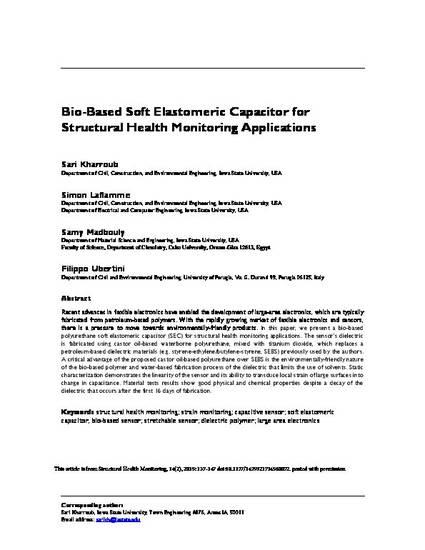
Recent advances in flexible electronics have enabled the development of large-area electronics, which are typically fabricated from petroleum-based polymers. With the rapidly growing market of flexible electronics and sensors, there is a pressure to move toward environmentally friendly products. In this article, a bio-based polyurethane soft elastomeric capacitor for structural health monitoring applications is presented. The sensor’s dielectric is fabricated using castor oil–based waterborne polyurethane, mixed with titanium dioxide, which replaces petroleum-based dielectric materials (e.g. styrene-ethylene/butylene-styrene) previously used by the authors. A critical advantage of the proposed castor oil–based polyurethane over styrene-ethylene/butylene-styrene is the environmentally friendly nature of the bio-based polymer and water-based fabrication process of the dielectric that limits the use of solvents. Static characterization demonstrates the linearity of the sensor and its ability to transduce local strain of large surfaces into change in capacitance. Material test results show good physical and chemical properties, despite a decay of the dielectric that occurs after the first 16 days of fabrication.
Available at: http://works.bepress.com/simon_laflamme/17/

This is a manuscript of an article from Structural Health Monitoring, 14(2), 2015: 137-147 doi:10.1177/1475921714560072.. Posted with permission